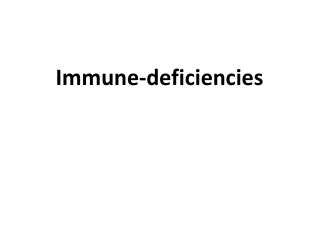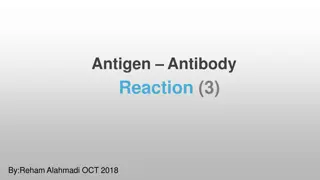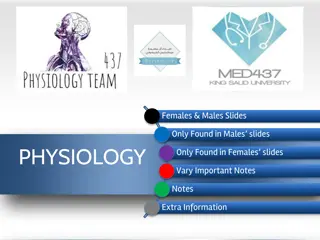
Complement System: Functions and Pathways Explained
Explore the fascinating world of the complement system, an essential component of the immune system that enhances the body's ability to combat pathogens. From its definition to the main functions and activation pathways, uncover the intricate workings of this biological defense mechanism. Discover how the complement system complements antibodies and phagocytic cells, its role in opsonization, chemotaxis, cell lysis, and more. Delve into the classical, alternative, and lectin pathways that trigger the cascade of complement activation. Enhance your knowledge of this critical immune response process.
Uploaded on | 2 Views
Download Presentation

Please find below an Image/Link to download the presentation.
The content on the website is provided AS IS for your information and personal use only. It may not be sold, licensed, or shared on other websites without obtaining consent from the author. If you encounter any issues during the download, it is possible that the publisher has removed the file from their server.
You are allowed to download the files provided on this website for personal or commercial use, subject to the condition that they are used lawfully. All files are the property of their respective owners.
The content on the website is provided AS IS for your information and personal use only. It may not be sold, licensed, or shared on other websites without obtaining consent from the author.
E N D
Presentation Transcript
StudyMafia.Org Complement System Submitted To: Submitted By: Studymafia.org Studymafia.org
Table Contents Definition Introduction Main functions of the Complement System Pathways Complement Regulation Diseases Conclusion 2
Definition The complement system helps or complements the ability of antibodies and phagocytic cells to clear pathogens from an organism. It is part of the innate immune system. 3
Introduction The complement system consists of a number of small proteins found in the blood, made by the liver. Normally they circulate as inactive precursors. When stimulated by a trigger, proteases split these small proteins to release active cytokines. This starts a series (a cascade) of further cleavages which release more cytokines. This amplifies the response. So, if the original stimulus was an invading bacterium, the cytokines disrupt the phospholipid bilayer cell membrane of the target, which kills it 4
Main functions of the Complement System Opsonization: Increases phagocytosis by opsonins (C4b and C3b) binding to foreign organisms Image 2: Phagocytosis. Chemotaxis: Attracts macrophages and neutrophils via inflammation by inflammatory mediators; C5a, and to a lesser extent C3a and C4a 6
Main functions of the Complement System Cell lysis: Ruptures membranes due to formation of a membrane attack complex (MAC). Agglutination: Causes clustering and binding of pathogens 7
Pathways A schematic representation of activation of 3 intrinsic pathways (classical, alternative, and mannose-binding lectin) to activate the complement cascade ie key-players C3 and C5 triggering the terminal pathway to constitute the Terminal Complement Complex (also known as MAC). Image: 9
Pathways Complement activation is a cascading event like the falling of a row of dominoes. It must follow a specific order if the end result is to be achieved. The circulating proteins have been grouped into three activation pathways, based on the types of substances and proteins that initiate the activation ie Classical; Lectin; Alternative 10
Pathways If you visualize a trident, the three tines represent the different initiation routes, while the handle represents the lytic mechanism by which this cascade ultimately destroys the threat, no matter which activation pathway started the response (all pathways converge to activate the pivotal protein of the complement system, called C3). 11
Complement Regulation The complement system has the potential to be extremely damaging to host tissues; hence regulatory mechanisms are required to restrict the complement pathway. Various plasma and cell membrane proteins regulate complement activation by inhibiting different steps in the cascade 13
Diseases The complement system is diffusely active within the body, and deficiencies or dysregulation results in immune system deficiencies, autoimmune disorders, or bleeding disorders. The complement system plays a critical role in inflammation and defence against some bacterial infections. 14
Conclusion The complement system is made up of a large number of distinct plasma proteins that react with one another to opsonize pathogens and induce a series of inflammatory responses that help to fight infection. A number of complement proteins are proteases that are themselves activated by proteolytic cleavage. 16
Thanks To StudyMafia.org






















